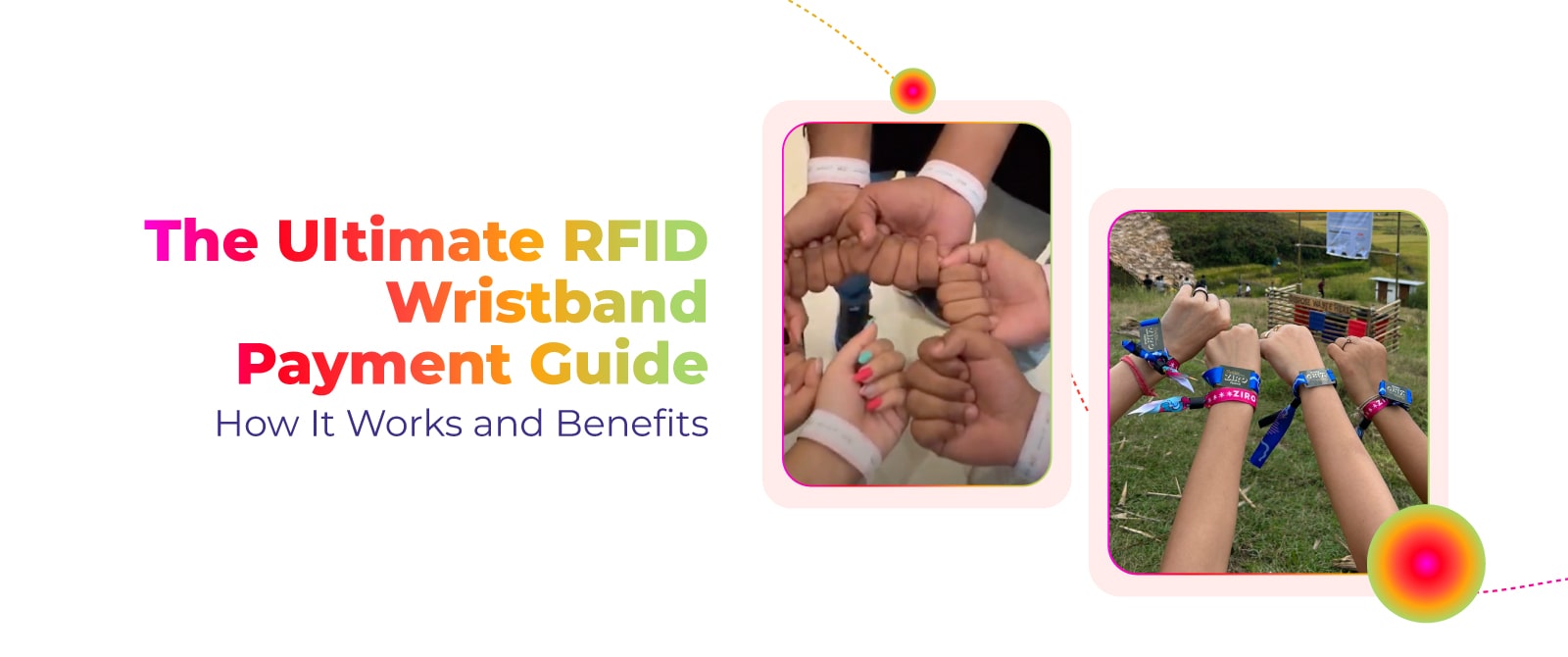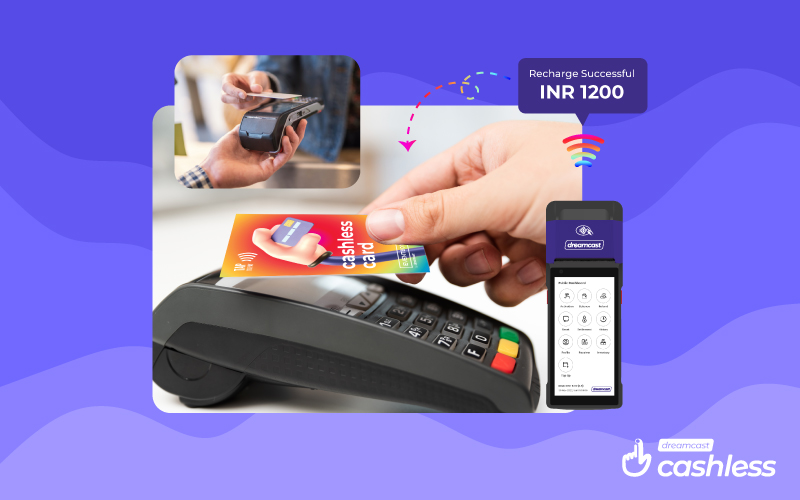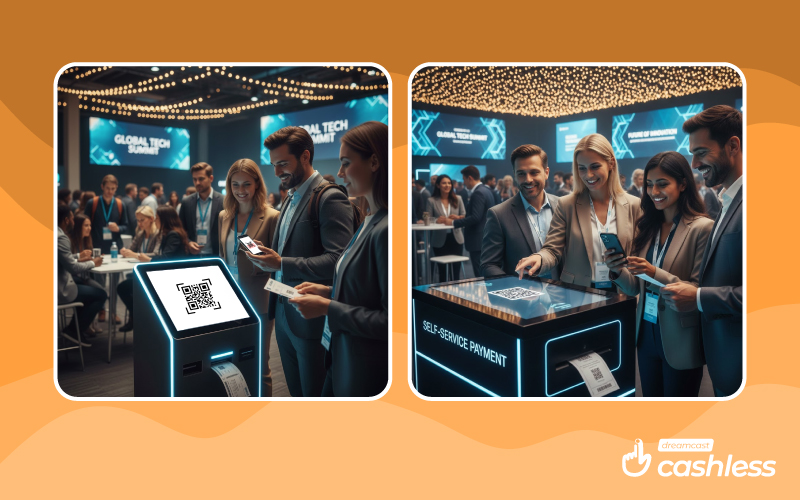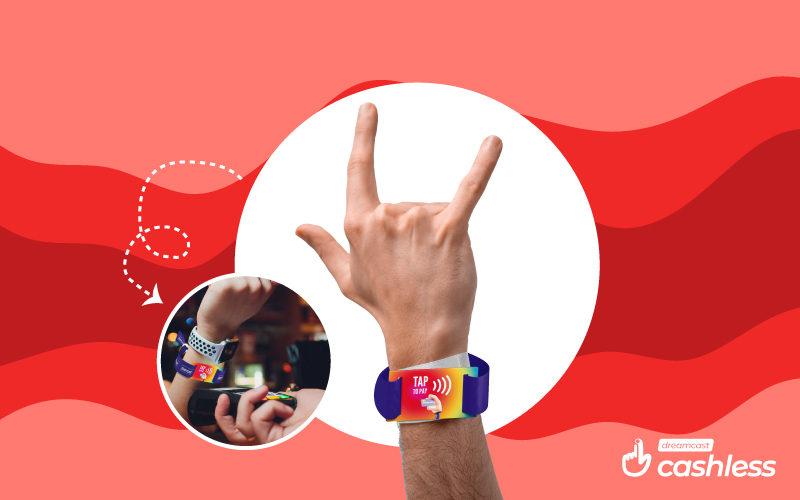Are you an event organizer wanting to change your payment methods and take your visitors’ experience to new heights? Have you ever wondered how you may streamline payment operations and create an event atmosphere that is genuinely smooth and secure? Using RFID wristband payment systems during the event might be the solution. These cutting-edge innovations are reshaping the event industry, offering a world of ease and creativity.
We will focus on cashless wristband payment systems in this guide. We’ll look at how they work and, more significantly, the multiple benefits they provide to improve the productivity, security, and profitability of your events.
What is a Wristband Payment System?
Wristband payment systems are a type of contactless payment technology. They are also known as cashless payment wristbands. They are made up of a wearable wristband that is equipped with a payment chip or technology that allows users to conduct transactions without the usage of physical currency or traditional payment methods. These contactless payment wristbands are intended to make it simple and secure for people to pay for products and services at diverse sites such as events, festivals, amusement parks, and resorts.
NFC Wristband payment systems are a cutting-edge technology that is transforming the way transactions take place in a variety of industries, including event management and hospitality. Additionally, these systems have gained popularity for their simplicity and efficiency by expediting payments and improving the entire consumer experience.

Key Components of Wristband Payment System
- Wristbands: The actual contactless payment wristbands are frequently composed of durable materials such as silicone, plastic, or fabric. Custom designs and branding components may be added to these bracelets.
- Payment Chip: This chip, which is embedded into the contactless payment wristband, is the core of the RFID payment solution, holding information required for transactions.
- User Accounts: Using a mobile app or event website, users link their wristbands to their accounts. Additionally, this allows people to add cash and keep track of their expenditures.
- Point of Sale (POS) Terminals: These are the terminals that sellers and merchants use to receive wristband payments. To support contactless transactions, POS terminals are outfitted with NFC (Near Field Communication) or RFID (Radio-Frequency Identification) technology.
- Payment Gateway: The payment gateway, which is an essential aspect of the payment process, securely sends transaction data between the wristband, the vendor’s POS terminal, and the user’s account.
The Technology Behind Wristband Payments
To conduct contactless transactions, RFID payment solution rely on modern technology. NFC and RFID are the two key technologies at work.
NFC (Near Field Communication): NFC is a wireless communication technology that allows data to be exchanged between devices that are close to each other. Near Field Communication allows wristband payment systems to connect with compatible POS terminals when they are brought into close contact. In addition, A contactless payment wristband with NFC offers fast and secure transactions, making it a popular solution for a wide range of applications.
RFID (Radio-Frequency Identification): RFID is a technology that identifies and tracks items using radio waves. RFID tags placed in contactless payment wristbands contain unique identifying numbers in RFID wristband payment systems. When a user begins a payment, the vendor’s POS terminal scans the RFID tag, enabling smooth and quick transactions.

Read our blog: Reasons To Consider RFID Payment Solution For Events
How Wristband Payment Systems Work
Because of their efficiency and convenience, NFC wristband payment systems have grown in popularity. To properly grasp how they function, let’s go through the step-by-step process of making a wristband payment, look at the role of payment gateways, mobile applications, and POS systems, and look at real-life examples where wristband payments are making a difference.
The Step-by-Step Procedure for Making an RFID Wristband Payment:
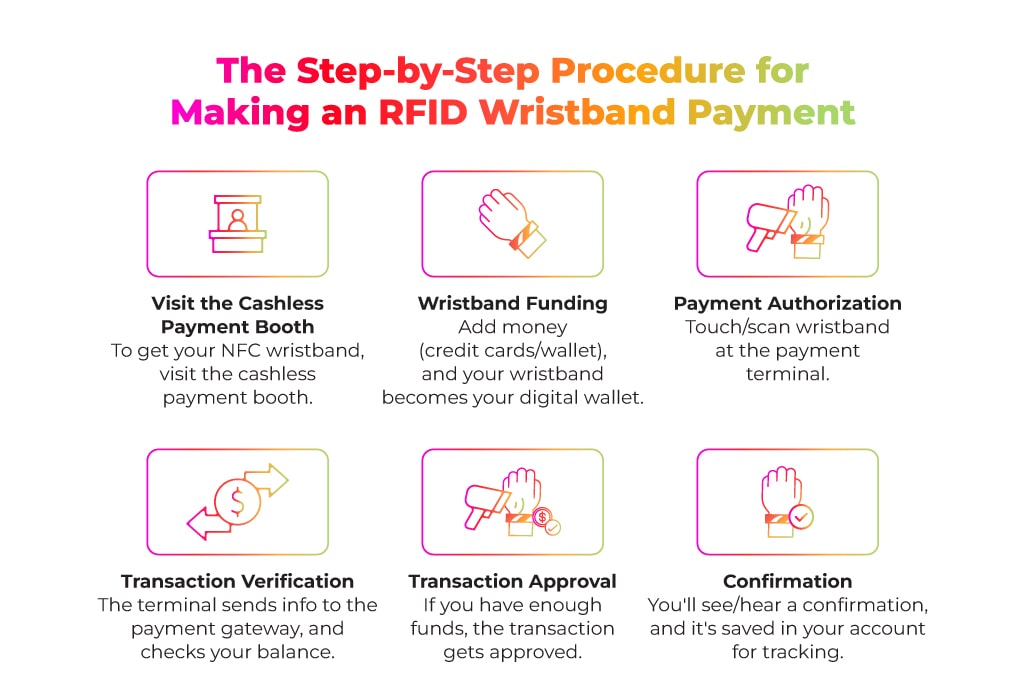
- Visit the Cashless Payment Booth: To get an RFID wristband, go to the special booth at the event called the “cashless payment booth.” The event staff there will give you your wristband.
- Wristband Funding: In order to make RFID payments, users must preload funds into their wristbands. This may be accomplished through the use of numerous payment methods, such as credit cards or mobile wallets. Additionally, users have a prepaid digital wallet on their wristband after funds are loaded.
- Payment Authorization: When a user decides to make a purchase, they begin the transaction by touching or scanning their wristband at the point of sale (POS) terminal. In addition, the wristband’s integrated technology, either NFC or RFID, connects with the terminal.
- Transaction Verification: The POS terminal securely sends transaction information to a payment gateway. Additionally, the payment gateway is in charge of processing the payment, authenticating the user’s account, and checking the wristband’s available balance.
- Transaction Approval: After verifying the transaction, the payment gateway sends an approval signal back to the POS terminal. The transaction is accepted if the user’s balance exceeds the purchase amount.
- Confirmation: A successful transaction is shown on the POS cashless system via a visual or auditory signal. Additionally, the transaction is also saved in the user’s account, allowing them to keep track of their spending.

Payment Gateways, Mobile Apps, and POS Systems’ Roles in the Process:
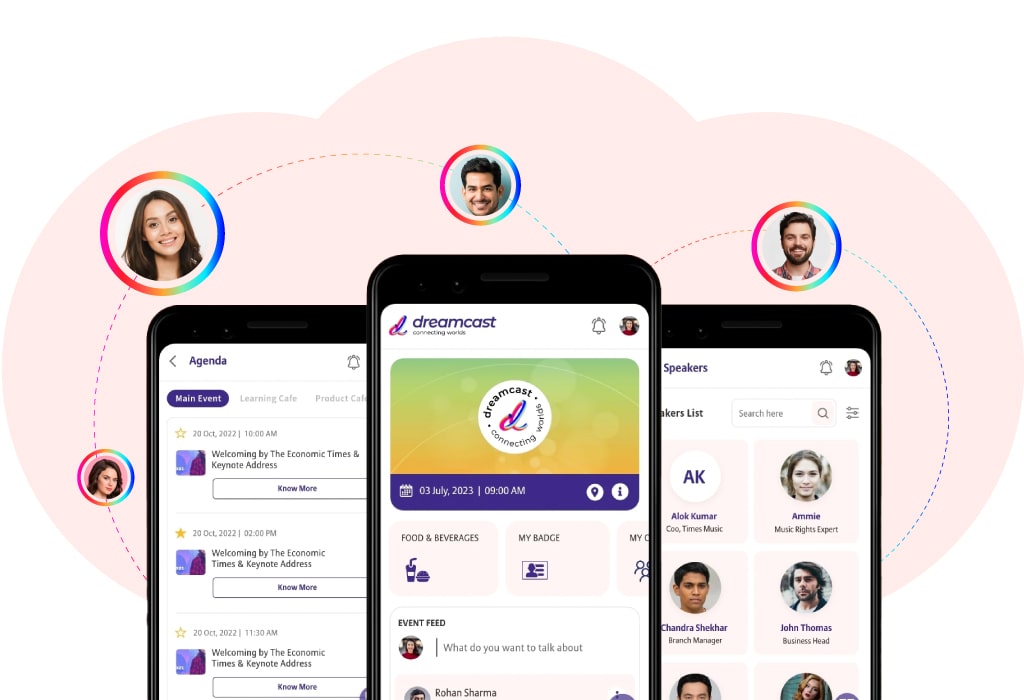
Payment Gateways:
It is essential component of the cashless wristband payment process. They serve as go-betweens for the user’s wristband, the POS terminal, and the user’s account. Additionally, it safeguard the transmission of transaction data, validate user accounts, and simplify payment authorization and settlement.
Mobile applications:
Mobile applications can also help to manage NFC Wristband payments. Users may use the app to connect their wristbands, check their account balance, add funds, and monitor transaction history. Additionally, mobile applications also make it easy to configure alerts, notifications, and security features, which improves the entire user experience.
POS Systems:
These are the physical devices where users make payments and are equipped with NFC or RFID technology. You can find these system at different points throughout an event or institution, such as merchandise stalls, food vendors, or admittance gates. They are in charge of completing wristband transactions safely and connecting with payment gateways.
Top 12 Benefits of Using Wristband Payment System in Events
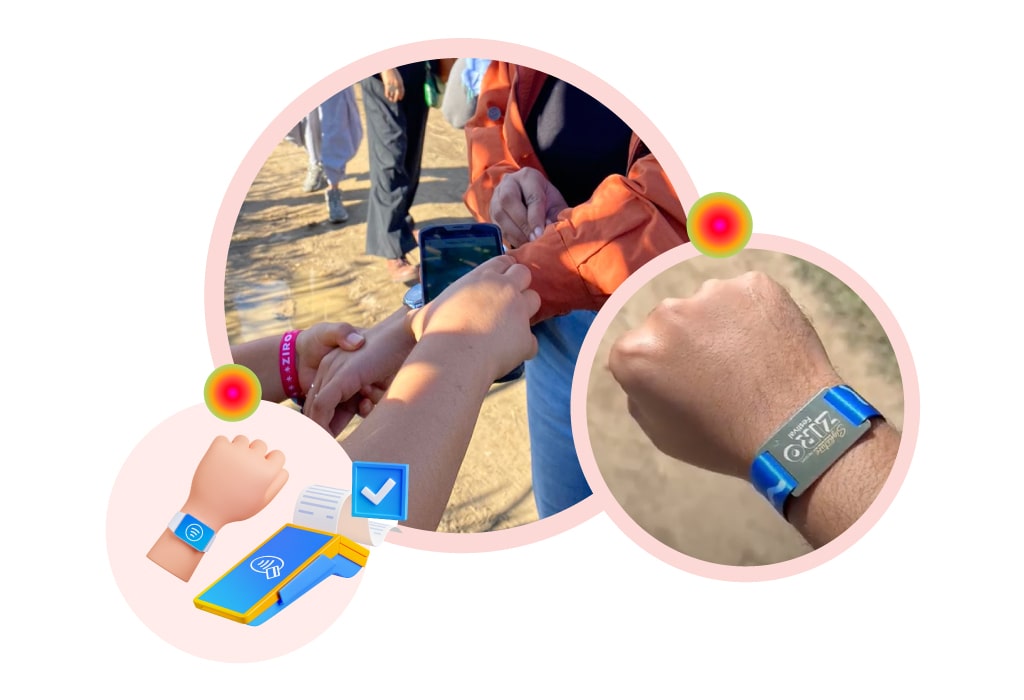
NFC Wristband payment systems are at the forefront of current payment solutions, providing an array of benefits to both users and businesses. Additionally, their transformational impact continues to redefine the way transactions take place in a number of situations, bringing advantages that go beyond the ease of cashless payments.
1. Increased Convenience: Simplify Your Event with Effortless Ease
Wristband payment systems have revolutionized transactional convenience. The absence of cash or credit cards implies that consumers may enjoy a simple payment method. Contactless payment wristband transactions are rapid and smooth, which saves wait times and is especially useful at events and busy locations. Furthermore, wristbands sometimes double as access tickets, easing entry processes. The simplicity of NFC wristband payments simplifies the entire experience for users, whether it’s a music festival, an amusement park, or a business meeting.
2. Better Customer Experience: Elevate Every Interaction
NFC/RFID Wristband payments aren’t simply about convenience; they also improve the whole user experience. Users may finish purchases without having to struggle with payment methods, which lowers annoyance while simultaneously encouraging greater spending. These wristbands may be personalized to represent branding, colors, and patterns, bringing a personal touch to the event or location. Furthermore, wristbands may be utilized to get rapid access to numerous services and venues, such as VIP sections, rides, or exclusive spaces within a venue, enhancing the entire user experience.
3. Security Options: Reduces the Risk of Theft or Fraud
Security is a top priority for both customers and organizations. When opposed to carrying cash or credit cards, wearing wristbands reduces the risk of theft or fraud significantly. And, users may govern their accounts by monitoring their transactions and setting spending restrictions using mobile apps. Furthermore, it can protect user data and financial information while providing peace of mind throughout each payment.
4. Simplified Business Operations: Amplify Your Efficiency
NFC Wristband payment systems are not only beneficial to individuals; they also bring simpler operations and considerable advantages to businesses.
Faster payment processing at POS terminals equals more sales and income.
Businesses can decrease the need for cashiers and the accompanying costs by conducting fewer cash transactions. In addition, integration with inventory and supply chain management is another advantage, supporting organizations in efficiently optimizing their stock levels.
5. Analytics and Data Insights: Turn Data into Actionable Wisdom
NFC/RFID Wristband payment systems’ data-driven nature opens up a world of possibilities for enterprises. Additionally, they provide businesses with significant information about customer behavior and spending habits, allowing them to modify their offers and marketing tactics accordingly.
6. Environment-Friendly: Solutions for a Sustainable Future
NFC Wristband payment systems support eco-friendly projects by decreasing paper waste. Additionally, the removal of paper tickets and receipts adds to a greener event or company environment. Furthermore, many wristbands can be reusable, eliminating waste and supporting sustainability.
7. Contactless and Hygienic: Safe and Clean, the Modern Way
Wristband payments provide a solution that eliminates physical touch in an era when health and cleanliness are vital. These contactless RFID payment solution limit the risk of germ transmission and provide consumers with peace of mind. Wristband transactions are suitable for events, venues, and organizations that value health and safety due to their touch-free nature.
8. Revenue Growth and Upselling: Boost the ROI

RFID payment solutions have a double benefit in terms of income. Users frequently preload their NFC payment wristbands with money, resulting in greater expenditure. Furthermore, businesses might stimulate increased spending by solely giving discounts or promotions to wristband users. Additionally, this upselling potential has the power to greatly increase the profitability of events and enterprises.
9. Versatility and adaptability: Adapt and Thrive in Any Environment
Wristband payment systems’ versatility is a crucial strength. These systems are suitable for a variety of businesses, including music festivals and amusement parks, as well as resorts and corporate events. Furthermore, cashless wristbands are perfect for access control, payments, and identification. Additionally, this adaptability enables event organizers and corporations to modify their usage to their own requirements, making wristbands an excellent choice for a variety of applications.
Read our blog: 15 Pros of Using Cashless Payment Solutions
10. Better Queue Management: Cut the Wait, Keep the Crowd Happy
Nobody enjoys standing around in long lines, especially not when there’s music playing, food smelling amazing, or activities waiting. Of course, it kills the excitement. But with a wristband payment system, things move fast. No need to dig into bags or wallets, no fumbling with cards or phones. One tap of an RFID wristband and it is done.
Lines move quicker, crowds stay calmer, and guests spend more time enjoying the event instead of staring at the back of someone’s head in a queue. For vendors, this means more sales in less time. For organizers, it is fewer complaints. And for the guests, it just feels smooth. It is a simple change that makes everything feel more under control.
11. Reduce Lost Sales: No Wallet, No Problem
It happens more than you’d think. Someone forgets their wallet in the car. Or maybe they didn’t bring enough cash. Even worse, sometimes the mobile signal is terrible, and the card machine won’t work. In those moments, a regular payment method fails. But an RFID payment system? Still works like nothing happened.
Guests can load funds onto their wristband payment system ahead of time, or even link it to a payment method if the system allows. So when a guest is hungry, thirsty, or wants to buy that cool souvenir, they don’t have to walk away empty-handed. No wallet? No signal? No issue. The sale still happens. That means vendors don’t lose money, and organizers don’t lose momentum. It keeps everything running even when things go wrong.
12. Custom Branding Opportunities: Turn Wristbands Into Mini Billboards
RFID wristbands aren’t just tools for payment; but they are the best way to showcase a brand. Think about it. Every person at your event is wearing one. Why not make it look good? You can match it to your event colors, print your logo, or even add a sponsor’s name. It’s a subtle but smart way to build your brand presence.
Guests often keep wristbands as keepsakes, especially when they’re cool or nicely designed. They take pictures, post them online, and show them to friends. That RFID payment system becomes a walking ad at your event and beyond. And sponsors love the extra exposure, too. You are not just managing transactions with your wristband payment system, you are also giving your brand (or your partners’) more visibility in a way that feels organic. It is low-effort marketing that keeps working long after the event ends.
Where NFC/RFID Wristband Payments Are Used
NFC/ RFID Wristband payments are becoming increasingly prevalent in a variety of sectors, providing a more convenient and secure means for customers to access services and make purchases. Additionally, their adaptability and agility have transformed the way we connect with events and establishments across the board, making them a flexible tool in modern event management. Let’s look at some of the industries and real-world examples where NFC payment wristbands are making a difference.
1. Festivals of Music:
NFC payment wristbands have been enthusiastically adopted by music events. These events are frequently packed, and standard payment methods might cause service to be delayed. This cashless payment solution for festivals allows festival-goers to pay for food, beverages, and products as well as obtain access to different zones on the event grounds. As a result, there are fewer lineups, happier guests, and more spending.
2. Amusement Parks:
Wristbands have become linked with convenience in amusement parks. They have essentially replaced old ticketing methods, allowing guests to instantly access rides and make purchases around the park. Additionally, Cashless wristband solutions for theme parks provide a hassle-free experience by removing the need for customers to carry paper tickets and cash, resulting in a more enjoyable visit.
3. Hotels and Cruise Ships:
To improve the passenger experience, several resorts and cruise ships have switched to wristband payments. Additionally, these NFC payment wristbands serve several functions, including serving as room keys and permitting spa treatments and purchases at different aboard businesses. As a consequence, visitors may rest and indulge without having to open their wallets during their stay or cruise.
4. Sports Events:
Spectators can utilize wristbands to more effectively purchase food and products, allowing them to spend less time in lines and more time enjoying the game or event. In addition, this improves the whole event experience and provides ease for fans.
5. Corporate Meetings and Events:
Wristband payments have even made it into the business sphere. NFC payment wristbands are suitable for registration, access control, and food services at corporate events and conferences. For instance, using cashless wristbands, attendees can quickly check-in, access multiple parts of the event, and make purchases or payments.
6. Water Parks:
Water parks have also jumped on the NFC cashless wristbands. They provide waterproof wristbands in order to pay for and get entrance to numerous water attractions. Additionally, visitors will have a more secure and convenient experience because they won’t have to worry about carrying cash or credit cards in a damp environment.
7. Food and Drink Festivals:
Food and beverage festivals, which celebrate culinary delights, have adopted NFC wristband payments as a way to streamline the tasting experience. In additionally, attendees may load money onto their wristbands and pay for their favorite foods and drinks without having to deal with cash or credit cards. Additionally, most organizers use Cashless Solution For Food Courts to improve the event experience and boost revenue.
Read India’s biggest food festival case study: Horn OK Please – Case Study.
8. Nightclubs and Bars:
Wristband payments have transformed the nightlife scene, allowing consumers to access and enjoy the offers of nightclubs and pubs more easily. Additionally, people can use Cashless Payment Solution for Night Clubs for admittance, drink orders, and even loyalty programs, making nightlife more fluid and secure.
Read our blog: How Cashless Payment is Reshaping Food Industry & Businesses
9. University Campuses:
Wristbands are also becoming popular on college campuses. NFC payment wristbands are suitable for a variety of functions, including gaining access to dorms and making purchases in on-campus businesses or cafeterias. In addition, this not only simplifies student life but also improves security and control.
Comparing Wristband Payments to Traditional Methods
| Aspect | Wristband Payments | Traditional Payment Methods |
| Convenience | – Quick and contactless transactions- No need to carry physical cards or cash – Reduced waiting times – Multi-purpose (access and payments) | – Requires physical cards or cash- Slower transaction times – May result in longer lines |
| Security | – Reduced risk of theft or loss – Secure user accounts with spending limits – Encrypted transactions | – Risk of theft or loss – Limited security features – Paper receipts can be lost or damaged |
| User Experience | – Enhanced overall experience – Customizable, branded wristbands – Quick access to various services – Reduced friction in transactions | – Traditional methods can be cumbersome – Often less personalized – Multiple cards or IDs to manage |
| Data Insights | – Data on user behavior and spending patterns – Targeted marketing and promotions – Business insights for optimization | – Limited data available – Less opportunity for targeted marketing |
| Environmental Impact | – Reduced paper waste (e-tickets, receipts) – Reusable wristbands reduce waste | – Relies on paper tickets and receipts – Often single-use, disposable |
| Hygiene and Safety | – Contactless, reduces physical contact – Ideal for health and safety in crowded settings | – Involves touching common surfaces – May contribute to the spread of germs |
| Revenue and Upselling | – Users often preload funds, leading to increased spending – Opportunities for upselling and promotions | – Traditional methods may result in missed upselling opportunities – Less potential for preloading |
| Operational Efficiency | – Faster transactions at POS terminals – Reduced cash handling – Integration with inventory and supply chain management | – Slower transaction times – Requires more cashiers for handling cash – Limited integration with other systems |
| Versatility and Adaptability | – Can be tailored to various industries – Multi-purpose use (access and payments) | – Limited adaptability – Traditional methods cannot serve dual purposes |
Read Our Blog: Contactless vs. Cashless Payment Solution
Security and Privacy Considerations
To provide a secure and seamless user experience while using cashless wristbands, it is critical to address security and privacy concerns. To begin, strong data encryption protocols must be implemented to protect critical payment information stored on the wristband. Furthermore, users should be informed of the necessity of protecting their wristbands and quickly reporting any loss to avoid illegal access.
To discover and address vulnerabilities, you need to complete regular security audits and upgrades. RFID payment solution can provide a convenient and secure way of transaction while preserving user data and privacy by concentrating on these security and privacy factors.
Looking for a Highly Secure and Reliable Wristband Payment System for your Events?
Do you want to transform the way your events manage payments while maintaining the greatest degree of security and dependability? Take a look at DC Cashless- your key to convenience, security, and an exceptional event experience! Our NFC wristband payment system is the ideal way to simplify transactions and improve the entire event experience. Instead of carrying cash or credit cards, participants may make payments with a single touch using our secure wristband system. By selecting DC Cashless, you not only simplify the payment procedure but also manage all financial transactions.
Get in contact if you’d like to learn more about the expenses of implementing a wristband payment system for the event or the possible advantages for your business.
FAQs
A wristband payment system is a cashless payment solution that enables participants to make purchases by wearing a wristband that is linked to their payment account. Additionally, it may improve your event by accelerating transactions, strengthening security, and increasing overall guest happiness.
You can collaborate with a payment system provider such as DC Cashless to implement a wristband payment system. Additionally, they will supply the technology, wristbands, and assistance needed to set up and operate the system for your event.
Yes, wristband payment methods are intended to be secure. To protect customer data and transactions, the cashless payment system often utilizes encryption and tokenization.
Yes, participants may attach their chosen payment methods to their wristbands, such as credit cards. Additionally, this enables a smooth and tailored payment process.
Attendees may enjoy a hassle-free experience thanks to preloaded wristbands. In addition, they may pre-load money into their wristbands, eliminating the need for cash or credit cards at the event.
Yes, most wristband payment systems such as DC Cashless give access to transaction data and analytics to event organizers. Additionally, this useful data will assist you in better understanding attendee purchasing habits and preferences.
If a wristband is misplaced, you may set up a dedicated customer service or help desk where guests can report the loss. To prevent unauthorized usage, these misplaced wristbands can be disabled.
You can set return policies for unused wristband payments, but you must properly communicate these policies to participants. In addition, some events may provide full or partial refunds, while others may have time limits.


